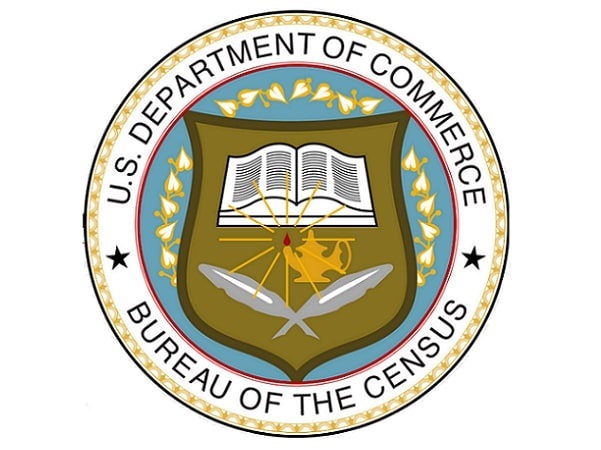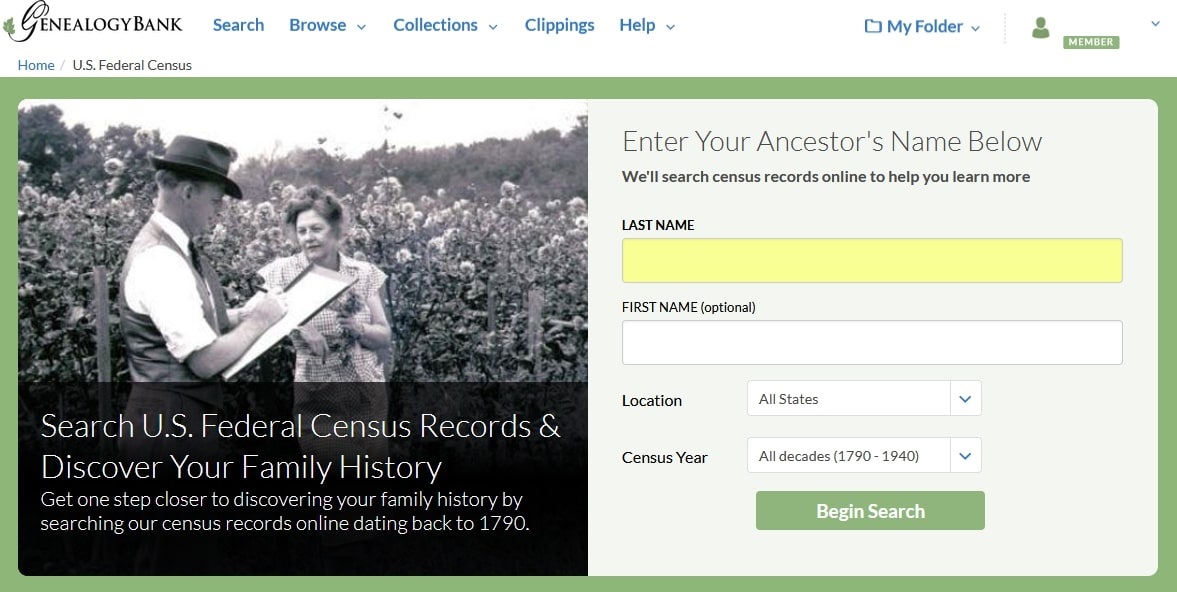Introduction: In this article, Katie Rebecca Garner gives more tips for using the information found on U.S. Census records from 1790-1840, and provides some case studies. Katie specializes in U.S. research for family history, enjoys writing and researching, and is developing curricula for teaching children genealogy.
In yesterday’s article, we explored the contents of the early census records from 1790 to 1840. We will continue this series today by learning how to use old census records and exploring some case studies that show the value of early censuses in genealogical research.
Using Old Censuses
When searching the U.S. Census records on GenealogyBank for your ancestor, type your ancestor’s name in the search box and select the census(es) you wish to find your ancestor on. You may also select the state your ancestor lived in.
After you do your search, examine the search results list and open the image of the census for your ancestor. It may be helpful to have a notepad handy and blank census forms. For the pre-1830 censuses, there may not be headings explaining what the data is. Take notes of the ages and genders of the household members. Compare this to known information and to other census data. Do they line up enough to be the same family? If there are discrepancies, can they be explained? For example, the census could contain children yet to be identified, or nieces and nephews can be living with the ancestral family.
Case Study: Cornelius Garvey’s Father
I was searching for Cornelius Garvey’s father and discovered two possible matches in the 1810 census living near each other in Chatham, Columbia, New York. (1) Each household contained a male under age 10, which was the expected age category for Cornelius Garvey (who was born in 1804). Both possible candidates would need to be researched further to determine which one was Cornelius’s father. Since they were neighbors with the same surname, it is possible that they were related to each other.
Only one of those men was found in the 1820 census: Cornelius Garvey Sr. (2) The same census return contained a Lyon household, matching the maiden name of Cornelius Garvey’s wife, Sophronia Lyon. Because that return had been alphabetized, there is no way to determine if this Lyon household was neighbor to the Cornelius Garvey Sr. household. However, this was still close enough proximity to recommend researching Cornelius Garvey Sr.
Case Study: Joseph Chapman
The 1810 through 1840 censuses show migration patterns for Joseph Chapman and his family. In 1810 (3) and 1820 (4), the Chapmans were living in Hartford, Washington, New York. In 1830, they were living in Granby, Oswego, New York (5). Of course, any migration is a clue to search for land records; the most obvious assumption is that Joseph sold land in Hartford and bought land in Granby. Knowing that New York granted bounty land in Oswego County changes this assumption to a clue for military research. The second page of the 1840 census for Joseph Chapman has no military information (6), but the second page of the 1840 census for his father, Ebenezer, shows that Ebenezer Chapman served in the Revolutionary War (7). Based on census data alone, it appears that Joseph Chapman may have moved to his father’s bounty land. Land records and probate records can confirm this.
Case Study: Frederick Bower
When Frederick Bower’s family was found on the 1810 to 1830 censuses, there was a discrepancy between them. The 1810 census showed a daughter under age 10 (6). The 1820 census showed three daughters under 10, but no daughter over 10 (7). The 1830 census showed a daughter 15 to 19, who lines up with a daughter under 10 in the previous census, and a daughter in her 20s, who lines up with the daughter under 10 in 1810 (8). One of the daughters in the 1820 census may have died by 1830. How can the other mismatch be explained? The oldest daughter was probably an infant when the 1810 census was taken, perhaps born after the census day, and would have been around 10 in the 1820 census, and around 20 in the 1830 census. By resolving this discrepancy, a specific birth year could be calculated for one of Frederick Bower’s daughters.
As these three case studies have shown, census records are a great starting point for your family history research. Carefully record and document all the data you find in census records, but know that your research is just beginning. Move on to government archives, historical newspapers, family Bibles, letters and journals, and other records to confirm the information you found in the census.
________________
(1) 1810 U.S. census, Columbia County, New York, Chatham, p. 806 (penned), lines 1 & 3, Cornelius Garvy and Thomas Garvy; digital image, FamilySearch (https://familysearch.org: accessed 24 February 2022), citing NARA microfilm publication M252.
(2) 1820 U.S. census, Columbia County, New York, Chatham, 9 (penned), line 2, Cornelius Garvey; digital image, FamilySearch (https://familysearch.org: accessed 24 February 2022), citing NARA microfilm publication M33.
(3) 1810 U.S. census, Washington County, New York, town of Hebron (indexed with Hartford), p. 66 (penned), line 11, Joseph Chapman; digital image, GenealogyBank (https://genealogybank.com: accessed 22 April 2022); citing FamilySearch collections.
(4) 1820 U.S. census, Washington County, New York, town of Hartford, p. 140 (stamped), line 7, Joseph Chapman; digital image, GenealogyBank (https://genealogybank.com: accessed 22 April 2022); citing FamilySearch collections.
(5) 1830 U.S. census, Oswego County, New York, town of Granby, p. 174 (penned), line 4, Joseph Chapman; digital image, GenealogyBank (https://genealogybank.com: accessed 22 April 2022); citing FamilySearch collections.
(6) 1840 U.S. census, Oswego County, New York, town of Granby, p. 12 (penned), line 17, Joseph Chapman; digital image, GenealogyBank (https://genealogybank.com: accessed 22 April 2022); citing FamilySearch collections.
(7) 1840 U.S. census, Washington county, New York, town of Hebron, p. 15 (penned), line 17, Ebenezer Chapman; digital image, GenealogyBank (https://genealogybank.com: accessed 22 April 2022); citing FamilySearch collections.
(8) 1830 U.S. census, Lancaster County, Pennsylvania, township of East Donegal, 78 (penned), ln. 15, Frederick Bowers; digital image, GenealogyBank (https://genealogybank.com: accessed 22 April 2022); citing FamilySearch collections.
Related Article:

